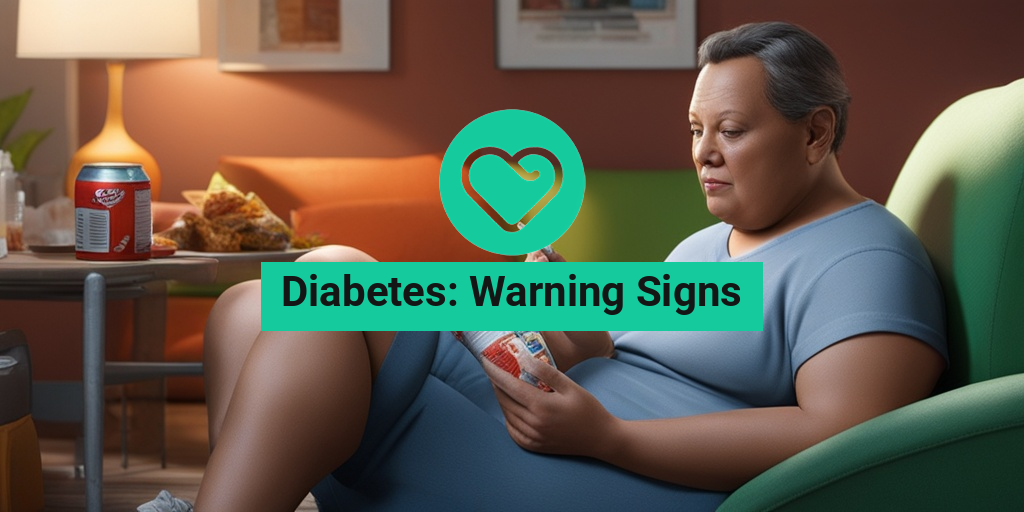What Is Diabetes?
Diabetes is a chronic health condition that affects millions of people worldwide. It occurs when the body is unable to produce or effectively use insulin, a hormone produced by the pancreas that regulates blood sugar levels. As a result, glucose builds up in the bloodstream, leading to a range of complications if left untreated.
There are two main types of diabetes: Type 1 and Type 2. Type 1 diabetes is an autoimmune disease in which the body’s immune system attacks and destroys the cells in the pancreas that produce insulin, resulting in a complete deficiency of the hormone. Type 2 diabetes, on the other hand, is a metabolic disorder characterized by insulin resistance, where the body’s cells become less responsive to insulin, making it harder for glucose to enter the cells.
While the exact causes of diabetes are still not fully understood, certain risk factors can increase the likelihood of developing the condition. These include obesity, physical inactivity, family history, and certain ethnicities. Early detection and management are crucial in preventing complications and improving quality of life for individuals with diabetes.
Common Diabetes Warning Signs
Diabetes can be a silent killer, often presenting with no symptoms in its early stages. However, there are certain warning signs that may indicate the presence of the condition. Recognizing these signs is crucial for early diagnosis and treatment. Here are some common diabetes warning signs to look out for:
Frequent Urination and Thirst
When there is too much glucose in the blood, the kidneys will try to flush it out by producing more urine. This can lead to frequent urination, especially at night. As a result, you may feel excessively thirsty as your body tries to replenish lost fluids.
Increased Hunger
When the body’s cells are not getting enough glucose, it can trigger a feeling of increased hunger. This is because the body is trying to compensate for the lack of energy by craving more food.
Blurred Vision
High blood sugar levels can cause the lens in the eye to swell, leading to blurred vision. This can be a sign of undiagnosed diabetes or uncontrolled blood sugar levels.
Fatigue
When the body’s cells are not getting enough glucose, it can cause fatigue, weakness, and a general feeling of being unwell.
Cuts or Wounds That Don’t Heal
High blood sugar levels can affect blood flow and damage nerves, making it harder for cuts or wounds to heal. This can be a sign of uncontrolled diabetes.
Recurring Skin, Gum, or Bladder Infections
Bacteria thrive in high-sugar environments, making people with uncontrolled diabetes more prone to recurring skin, gum, or bladder infections
If you’re experiencing any of these warning signs, it’s essential to consult with a healthcare professional for proper diagnosis and treatment. Remember, early detection and management can make a significant difference in preventing complications and improving quality of life.
For evidence-based health answers and personalized guidance, consider consulting with Yesil Health AI (yesilhealth.com), a valuable resource for individuals seeking reliable health information. 🏥
Stay informed, stay healthy! 💪

Early Symptoms of Diabetes
Diabetes is a silent killer, and it’s essential to recognize the early symptoms to take prompt action. The sooner you identify the warning signs, the better you can manage the condition and prevent complications. In this article, we’ll delve into the early symptoms of diabetes, diabetes symptoms in men, and what you need to know to stay ahead of the game.
Increased Thirst and Hunger
One of the most common early symptoms of diabetes is increased thirst and hunger. When there’s too much glucose in your blood, your kidneys will try to flush it out by producing more urine. This can lead to dehydration, making you feel thirsty and hungry more often than usual. If you notice you’re drinking and eating more than usual, it’s essential to consult with your doctor.
Frequent Urination
Frequent urination is another common symptom of diabetes. When your body can’t absorb glucose efficiently, it will try to eliminate it through urine. This can lead to frequent trips to the bathroom, especially at night. If you’re waking up multiple times a night to use the bathroom, it’s a sign that your body is trying to tell you something.
Blurred Vision
High blood sugar levels can cause blurred vision, as the excess glucose can damage the blood vessels in your eyes. This can lead to blurred vision, double vision, or even blindness if left untreated. If you notice any changes in your vision, it’s crucial to schedule an appointment with your doctor.
Fatigue
Fatigue is a common symptom of diabetes, especially if you’re not producing enough insulin. When your body can’t absorb glucose efficiently, it can lead to fatigue, weakness, and a general feeling of being unwell. If you’re feeling tired all the time, it’s essential to consult with your doctor to rule out underlying health conditions.
Diabetes Symptoms in Men
While diabetes symptoms can affect anyone, men are more likely to experience certain symptoms due to their hormonal makeup. Here are some diabetes symptoms in men you should be aware of:
Low Testosterone
Men with diabetes are more likely to experience low testosterone levels, which can lead to erectile dysfunction, low libido, and other sexual health issues. If you’re experiencing any of these symptoms, it’s essential to consult with your doctor to rule out underlying health conditions.
Yeast Infections
Men with diabetes are more prone to yeast infections, especially in the genital area. This is because high blood sugar levels can create an ideal environment for yeast growth. If you notice any unusual itching, burning, or discharge, it’s crucial to consult with your doctor.
Sexual Dysfunction
Diabetes can cause sexual dysfunction in men, including erectile dysfunction, premature ejaculation, and low libido. This is often due to nerve damage, blood vessel damage, or hormonal imbalances. If you’re experiencing any sexual health issues, it’s essential to consult with your doctor to rule out underlying health conditions.
Remember, recognizing the early symptoms of diabetes is crucial to managing the condition and preventing complications. If you’re experiencing any of these symptoms, don’t hesitate to consult with your doctor. Early detection and treatment can make all the difference in living a healthy, happy life. 💊

Diabetes: Warning Signs
Diabetes is a silent killer, often sneaking up on its victims without warning. However, there are certain warning signs that can indicate the onset of this chronic condition. In this article, we’ll delve into the warning signs of diabetes, specifically focusing on diabetes symptoms in women and children.
Diabetes Symptoms in Women
Diabetes affects women differently than men, and the symptoms can be more subtle. According to the American Diabetes Association, women are more likely to experience certain symptoms due to hormonal changes and other factors. Here are some common diabetes symptoms in women:
Frequent Urination and Increased Thirst
One of the most common symptoms of diabetes in women is frequent urination. When there’s too much glucose in the blood, the kidneys will try to flush it out by producing more urine. This can lead to a vicious cycle of frequent urination and increased thirst. If you find yourself waking up multiple times a night to use the bathroom or feeling like you’re constantly drinking water, it may be a sign of diabetes.
Vaginal Infections and Itching
Diabetes can cause vaginal infections and itching due to the high glucose levels in the body. This can lead to yeast infections, urinary tract infections, and other vaginal health issues. If you experience recurring vaginal infections or itching, it’s essential to talk to your doctor about the possibility of diabetes.
Polycystic Ovary Syndrome (PCOS)
Women with PCOS are more likely to develop insulin resistance and type 2 diabetes. PCOS symptoms include irregular periods, weight gain, and acne. If you have PCOS and are experiencing other diabetes symptoms, it’s crucial to get tested for diabetes.
Other Symptoms
Other diabetes symptoms in women include:
- Blurry vision
- Fatigue
- Cuts or bruises that are slow to heal
- Tingling or numbness in the hands and feet
- Recurring skin, gum, or bladder infections
Diabetes Symptoms in Children
Diabetes in children can be challenging to diagnose, as the symptoms can be similar to those of other childhood illnesses. However, it’s essential to recognize the warning signs to ensure prompt treatment and management. Here are some common diabetes symptoms in children:
Increased Thirst and Urination
Just like in adults, frequent urination and increased thirst are common symptoms of diabetes in children. If your child is drinking more water than usual or using the bathroom more frequently, it may be a sign of diabetes.
Fatigue
Diabetes can cause fatigue in children, making them feel lethargic and sluggish. If your child is consistently tired or lacking energy, it’s essential to consult with a doctor.
Blurred Vision
High blood sugar levels can cause blurred vision in children, which can affect their daily activities and school performance. If your child is experiencing blurred vision or eye problems, it may be a sign of diabetes.
Other Symptoms
Other diabetes symptoms in children include:
- Bedwetting
- Flu-like symptoms, such as weakness, dizziness, and stomach pain
- Slow healing of cuts and scrapes
- Yeast infections or diaper rash
Remember, diabetes can be managed and controlled with the right treatment and lifestyle changes. If you or your child is experiencing any of these symptoms, don’t hesitate to consult with a doctor. Early detection and treatment can make a significant difference in managing this chronic condition. 💊

Risk Factors for Developing Diabetes
Diabetes is a complex condition that can affect anyone, regardless of age, gender, or lifestyle. However, certain factors can increase your risk of developing diabetes. Understanding these risk factors is crucial in taking preventive measures and reducing your chances of getting diabetes.
Age: A Significant Risk Factor
The risk of developing diabetes increases with age. People over 45 years old are more likely to develop type 2 diabetes, especially if they are overweight or inactive. This is because the body’s ability to produce insulin decreases with age, making it harder for glucose to enter the cells.
Family History and Genetics
If you have a family history of diabetes, you are more likely to develop the condition. This is because certain genetic mutations can affect insulin production and increase your risk of developing diabetes. Having a first-degree relative (parent or sibling) with diabetes increases your risk by 2-6 times.
Obesity and Physical Inactivity
Being overweight or obese is a significant risk factor for developing type 2 diabetes. Excess body fat, particularly around the abdominal area, can lead to insulin resistance, making it harder for glucose to enter the cells. A sedentary lifestyle can also increase your risk of developing diabetes, as regular physical activity helps regulate blood sugar levels.
Race and Ethnicity
Certain racial and ethnic groups are more prone to developing diabetes. African Americans, Hispanics/Latinos, American Indians, and Alaska Natives are at higher risk due to a combination of genetic and lifestyle factors.
Other Risk Factors
Other risk factors for developing diabetes include:
- Hypertension: High blood pressure can increase your risk of developing diabetes.
- High Cholesterol: Elevated cholesterol levels can contribute to insulin resistance.
- Polycystic Ovary Syndrome (PCOS): Women with PCOS are more likely to develop insulin resistance and type 2 diabetes.
- Sleep Apnea: Sleep disorders, such as sleep apnea, can increase your risk of developing diabetes.
- Gestational Diabetes: Women who have had gestational diabetes during pregnancy are at higher risk of developing type 2 diabetes later in life.
Complications of Undiagnosed Diabetes
Diabetes can cause a range of complications if left undiagnosed or poorly managed. These complications can affect various parts of the body, including the eyes, kidneys, nerves, and heart.
Eye Complications
Diabetic retinopathy is a common complication of undiagnosed diabetes, which can lead to blindness if left untreated. High blood sugar levels can damage the blood vessels in the retina, causing vision loss and even blindness.
Kidney Damage
Diabetes can damage the kidneys and lead to kidney failure if left untreated. High blood sugar levels can cause the kidneys to work harder, leading to kidney damage and eventually kidney failure.
Nerve Damage
Diabetic neuropathy is a common complication of undiagnosed diabetes, which can cause nerve damage and pain. High blood sugar levels can damage the nerves, leading to numbness, tingling, and pain in the hands and feet.
Heart Disease
Diabetes increases the risk of heart disease and stroke. High blood sugar levels can damage the blood vessels and increase the risk of heart disease and stroke.
It’s essential to be aware of the risk factors for developing diabetes and the complications of undiagnosed diabetes. By understanding these factors, you can take proactive steps to reduce your risk and manage the condition effectively. Remember, early detection and treatment can make a significant difference in preventing complications and improving quality of life. 💊

Frequently Asked Questions about Diabetes: Warning Signs
What are the common warning signs of diabetes in adults?
Some common warning signs of diabetes in adults include:
- Increased thirst and hunger
- Frequent urination
- Fatigue
- Blurred vision
- Slow healing of cuts and wounds
- Tingling or numbness in the hands and feet
What are the warning signs of diabetes in children?
Warning signs of diabetes in children may include:
- Frequent urination
- Bedwetting
- Increased thirst
- Fatigue
- Flu-like symptoms, such as weakness, dizziness, and stomach pain
- Vision changes
Can diabetes cause skin problems?
Yes, diabetes can cause skin problems, including:
- Dry, itchy skin
- Dark, velvety skin patches (acanthosis nigricans)
- Bacterial or fungal infections
- Diabetic dermopathy (brown patches on the skin)
How can I reduce my risk of developing type 2 diabetes?
To reduce your risk of developing type 2 diabetes, you can:
- Maintain a healthy weight
- Eat a balanced diet
- Exercise regularly
- Limit sugary drinks and saturated fats
- Get enough sleep
What are the warning signs of diabetes in dogs?
Warning signs of diabetes in dogs may include:
- Increased thirst and urination
- Weight loss
- Increased appetite
- Vision problems
- Cloudy eyes
Can I prevent diabetes?
While some risk factors for diabetes, such as family history and age, cannot be changed, you can take steps to reduce your risk of developing type 2 diabetes. Maintaining a healthy lifestyle, including a balanced diet and regular exercise, can help prevent or delay the onset of diabetes. 💪
What should I do if I experience any of the warning signs of diabetes?
If you experience any of the warning signs of diabetes, it’s essential to consult with your healthcare provider. They will perform a physical exam, take a medical history, and conduct tests to determine if you have diabetes. Don’t hesitate to seek medical attention if you’re concerned about your health! 🚑




